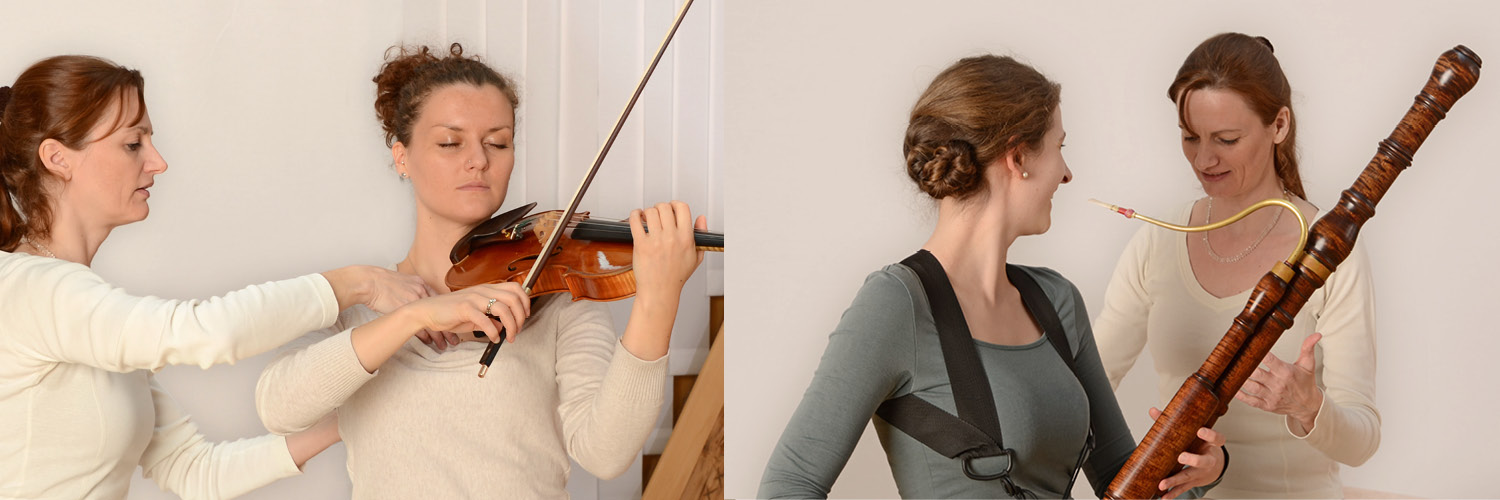Feldenkrais for Instrumentalists
The high demands of playing an instrument require us to be particularly
alert and sensitive to the way we use our bodies. This enables us to
remain physically fit and to realise our intentions. However, many
problems can arise from the way we hold and play our instrument and from
the conditions in which we perform (e.g. restricted space in the
orchestra pit). Furthermore, subconscious habits of posture and movement
from other contexts frequently affect posture and playing negatively.
The sound, the ability to react and the ability to express oneself are
all impaired, and instrumentalists often begin to experience discomfort
in the musculoskeletal system.
There are two things an instrumentalist must do in order to achieve
effortless of playing while still retaining their unique individual
style. The first is to recognise counterproductive habits, or
resistance, in order to resolve them. The other is to develop an
understanding of how our individual system of movement, with its complex
relationships and interconnections, is organised – both with and
without the instrument. By capitalising on this understanding, we have
at our disposal a range of technical possibilities, which can be
selected as desired to express music and its content in a nuanced way.
The goal is to understand what one is actually doing, to recognise
interferences or hindrances, so that these can be removed, and the body
used increasingly precisely, effortlessly and deliberately in connection
with the instrument. The more accurately we feel what and, above all,
how we are doing something, the better we can influence and alter it.
Thus our energy can be channelled efficiently rather than being diverted
by subconscious postural patterns, and the more energy, stamina,
confidence and freedom is released for playing the instrument and for
musical expression.
The Method
The Feldenkrais Method investigates, among other things, the various
factors that interact with each other to enable a free and dynamic
posture while also incorporating the instrument. There is a particular
focus on exploring the balance within the feet-pelvis-ribcage-head and
finger-hand-arm-shoulder-torso relationships.
Group Sessions
In group sessions I use verbal impulses to lead the participants through
detailed sequences of gentle movements in lying, sitting or standing
positions. By performing these movements, participants can observe in
minute detail how the skeleton, nervous system and muscles correspond to
one another, how this can be used as rationally and efficiently as
possible, and how these relationships can be reorganised and optimised.
Many of the lections also involve working with your instrument.
One-to-one
A significant part of one-to-one sessions involves hands-on work with
the client, which means I can cater for individual characteristics as
well as requests. Together, we observe in detail the contact to the
instrument, the overall posture when the instrument is incorporated, and
the way that we approach technical challenges – and one by one we
untangle the habits that hinder posture and playing in any way.
:::
